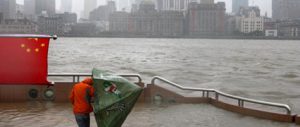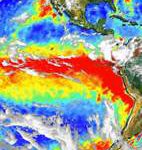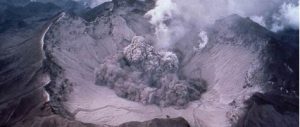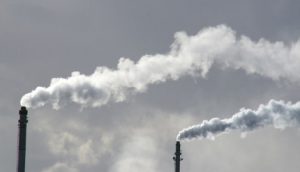Cyclone Sandy battered the east coast of the US this week, leaving eight million people without electricity and causing floods, fires and billions of dollars in damage across the mid-Atlantic region.
At least 100 people have died in the US and the Caribbean as a result of the storm. The death toll surely would have been even more catastrophic had it not been for the urgent warnings and evacuation orders issued in affected areas in advance of Sandy’s approach – warnings based upon dire and unambiguous scientific forecasts.
For all of its devastation on the ground, Sandy was a triumph of weather prediction. The meteorological models used to chart the storm’s progress forecast the storm’s strength and path with exceptional accuracy.
Read also: natural disasters cost $380 billion in 2011
Read also: Beijing floods: not enough prevention
“Not only did the models correctly project Sandy’s strength and path, they predicted an unprecedented storm – just about the highest accomplishment in forecasting,” journalist Nate Cohn wrote.
Sandy was an unusual storm on many fronts. The changes in pressure and temperature that the storm encountered on its northward path – forces that normally serve to weaken storms before they reach land – had the effect this time of creating an storm of unprecedented proportions that headed straight for the coastal US.
Forecasting natural disasters
The role of forecasters in informing the public of impending natural disasters has been the subject of serious debate of late.
Earlier this month, an Italian court convicted six seismologists of manslaughter for playing down earthquake risks in the L’Aquila region just days before a devastating earthquake killed more than 300 people in April 2009.
Scientists have assailed the verdict, noting that – unlike storms – earthquakes are nearly impossible to predict with any degree of accuracy.
The issue in question, however, is how information in scientists’ possession gets passed to the public as public safety advice. Prosecutors argued that the scientists – who were part of a government panel on risk – offered “incomplete and contradictory” assessments of an earthquake’s probability. When the 6.3 magnitude quake struck, residents said they felt ill-prepared and misled by authorities.
China’s preparedness
Advance warning can’t stop a disaster’s approach, of course, but it can give residents time to mitigate its effects.
Officials in the US have praised China’s skill at notifying residents in advance of natural disasters. “I would say they do a very good job of it there,” Bryan Koon, director of emergency management in the hurricane-prone state of Florida, told Voice of America in advance of Typhoon Haikui in August.
“In China, since the government owns much of the media outlets, they’ve got the opportunity to give information to people probably in a more concise and directed manner than we do here in the United States. They can really turn a switch and blanket all of the methods of communication and getting news out to folks,” he added.
As climate change continues to fuel more once-unthinkable disasters like Sandy, planners around the world will have to take disaster preparedness seriously.
Hurricane Katrina in 2005 showed the US the devastating consequences of failing to properly manage emergencies. Sandy touched down in a much more densely populated part of the country. The memory of those scenes of destruction – along with a grave weather forecast that turned out to be entirely true – may have helped prevent an even greater tragedy.
It’s a lesson the US and the world may have to rely on more often in the future.






